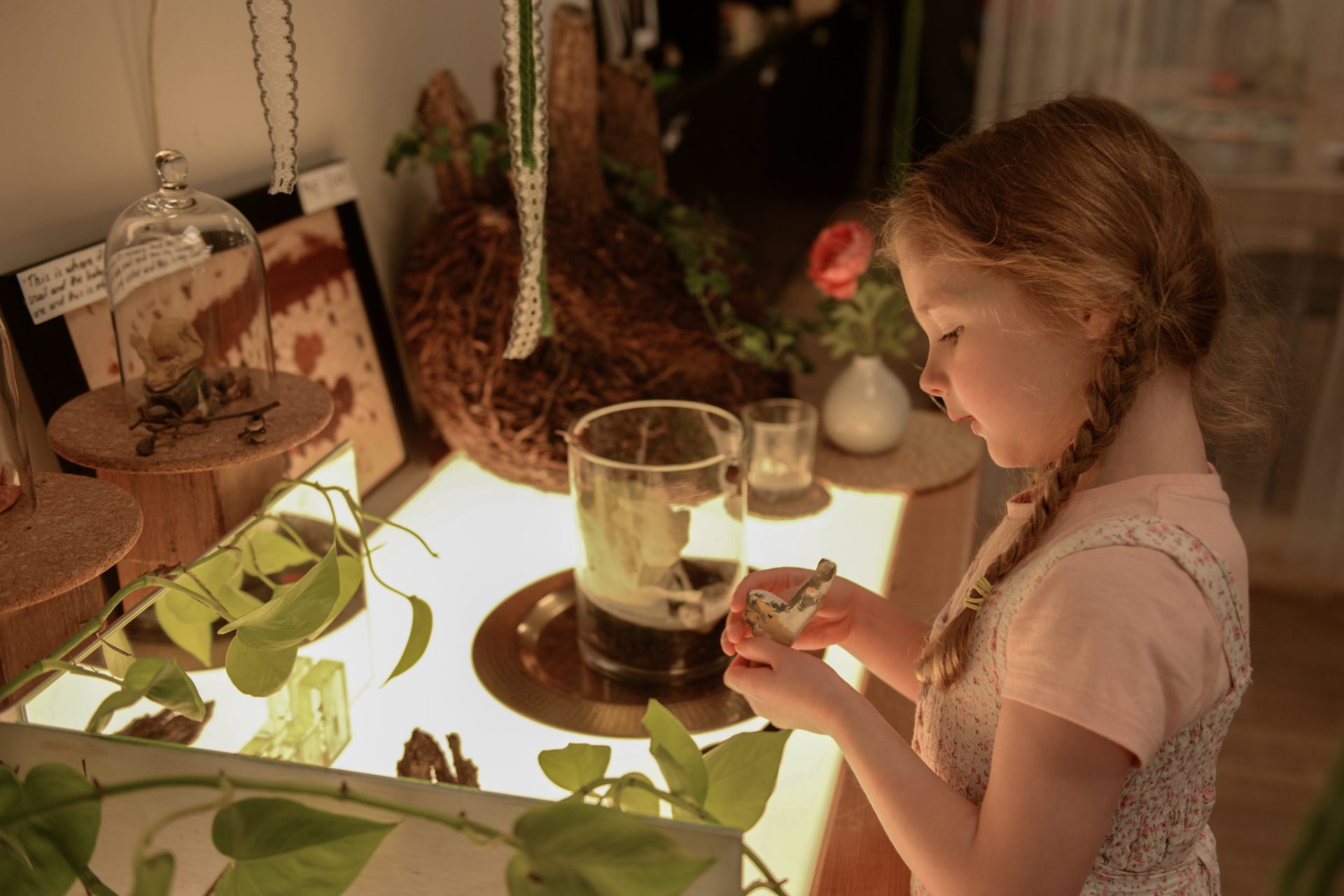
The success of the Reggio Emilia approach within early childhood education has been mirrored in continents across the world. With its roots in Italy, Europe, this unique method is guided by the concept that the teacher is more of a partner in learning, as opposed to presenting a structured educational syllabus.
Respecting the child is at the heart of Reggio Emilia, something that’s immediately apparent when you view an educator with their charges. In complete contrast to conventional teaching, you’ll notice that these early childhood educators work at the same level as their class – either sitting on the floor with them or using child-sized chairs.
This, of course, isn’t the only difference. But it is the first and most instantly noticeable factor when walking into a Reggio Emilia classroom. Unless, of course, the pupils have directed their learning experience toward one of the tactile indoor or outdoor environments or are taking some time out in a quiet zone.
The Natural Curiosity of the Child Mind
One of the biggest differences between Reggio Emilia and conventional early childhood learning is that the child leads the way. Rather than the teacher defining a set learning roadmap, children are encouraged to follow what most piques their curiosity.
For example, the teacher might instigate conversations about what children did on their holidays. As their pupils talk about their own experiences, who knows where the chatter might lead? Children’s questions can be delightfully simple or incredibly complex – and the whole idea is to follow wherever this thought plan this might lead. The advantages of this are many:
- Children question and learn about topics that truly interest them
- It increases their natural inquisitiveness
- It creates a sound basis from which a thirst for knowledge grows
- It sets the building blocks for a lifelong love of learning
In short, the teacher provides the guiding hand necessary to create the very best start in life for future learning.
The All-Important Subject of Space
Another vital aspect of the Reggio Emilia approach is that the teacher gives their children the space to do what truly inspires them. Early childhood education should be about the freedom to express yourself in many ways. Creativity is something to be treasured, which is why the classroom space will contain many different mediums in which children can use and hone their unique skills.
Tactile apparatus – such as sand, water, building blocks, plants and many other items - will be freely available in a Reggio Emilia classroom. You might find an art area, a garden, a place for reading, a large space for dance… Importantly, this will be open plan and welcoming – a place where the teacher can be led by what the children want to do, rather than a structured regime. Reggio Emilia considers that environment to also be a teacher, which is why this learning space construction is so important.
The whole concept is that the children build a strong, trusted connection with their teacher, who acts more as a learning partner than an overarching figure of authority.
Another example of the approach is when children ask questions. Rather than simply giving an answer, the teacher will use this to guide the child or group to work it out for themselves. Not only will the adult be physically down at the same level as their pupils, but also figuratively, directing the children to follow their natural curiosity that leads from one question to another.
Reggio Emilia Benefits both Students and Teachers
This hands-on, innovative approach to early childhood education doesn’t only benefit pupils – teachers also love the interactive approach. In such a facility, the philosophy of embracing each child’s individuality and the personal elements of Reggio Emilia eliminates the danger of teachers becoming too removed from their pupils. This even applies at management level, because following the concept requires all staff to be involved – remember, the environment is the teacher - and that includes everyone in the school.
From nursery through toddler and kindergarten, all the Evoke Early Learning centre locations are delighted to guide their charges through the highly acclaimed Reggio Emilia approach.
We would love to show you around one of our Evoke Early Learning centres so why not book a tour of one of our Evoke Early Learning childcare centres in Clayton or Albert Park?

Tracey is a highly qualified educator and administrator and brings a strong combination of academic achievement, extensive work experience in the education and business sectors as well as drive and passion to her role as General Manager of Operations at Evoke Early Learning.
Tracey has a Master of Education and an Advanced Diploma of Business and holds VIT Dual Registration to teach in Early Childhood and Primary School settings. She’s also a VIT Trained Mentor Teacher and has worked in ECEC settings as a Director, Educational Leader and as a Victorian Senior Area manager. Her recognition as a state finalist in the recent Director of the Year Awards is testament to her achievements in the early education sector.
Her extensive work experience also included a stint as Head of Curriculum at the Royal Children’s Hospital Education Institute and positions as head of ICT at a number of large primary and secondary schools. Tracey is also experienced in not-for-profit sessional kindergarten settings and long daycare environments, so she has a deep understanding of what’s required to support the needs and expectations of young children, educators, parents and caregivers.
Tracey is responsible for operational management at Evoke Early Learning’s Clayton centre in Oakleigh East and their Albert Park centre in South Melbourne and is deeply committed to leading and driving effective and sustainable service delivery throughout the company.
Tracey is passionate about making a meaningful difference to young children, their parents and the wider community and under her expert guidance, Evoke Early Learning is continuing to raise the bar in quality early education and childcare.


